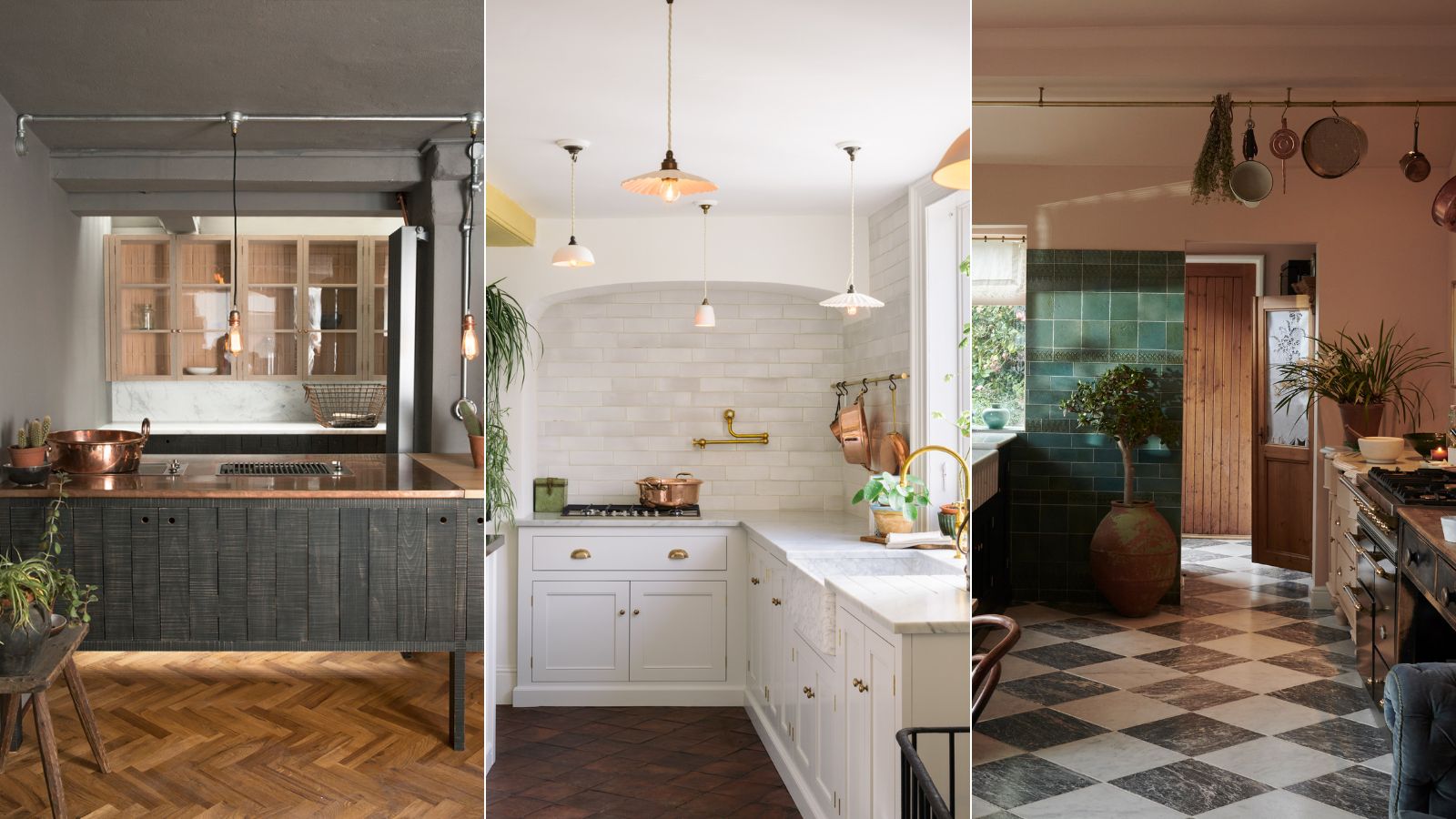
There are so many questions to ask when designing a new kitchen, one of them being should kitchen flooring be lighter or darker than walls? Although it might not be at the top of your list when it comes to your kitchen reno, it will have a large impact on the overall look of the completed design.
You've probably thought a lot about the color of your kitchen, from the cabinets to the walls, but have you considered how your chosen paint colors will work with your kitchen flooring, and vice versa? They're two components that have to be decided on when looking at kitchen ideas, but it's something people often forget to consider in tangent.
So, if you're opting for white kitchen walls, will dark oak wood still work, or should you opt for light tiles? We've turned to the experts to find out how to choose the right flooring and wall color pairings.
Should kitchen flooring be lighter or darker than walls?
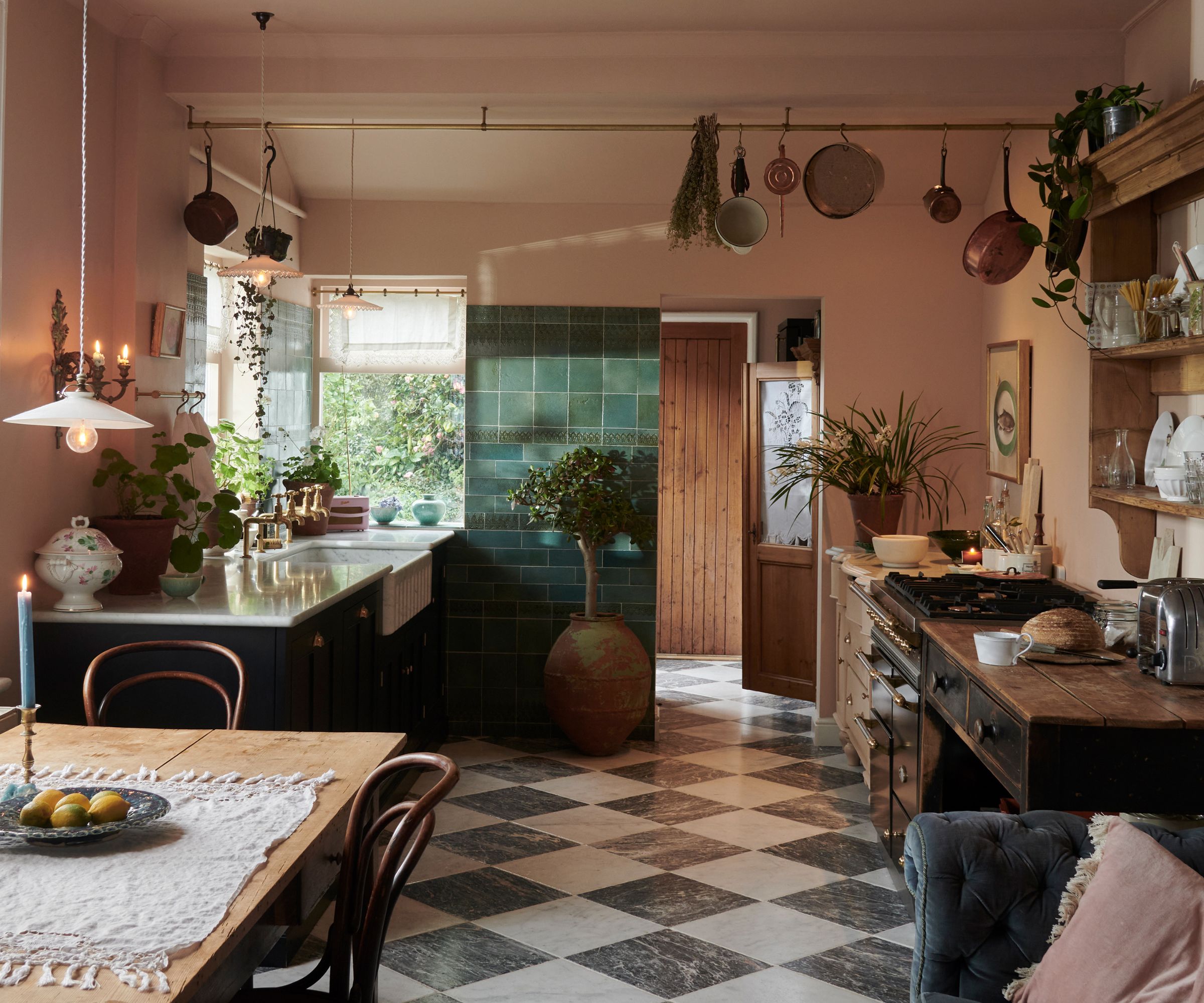
With so many kitchen flooring and wall color options to choose from, it can feel like a daunting decision to make. 'Personally, I love keeping lighter tones for kitchen floors as well as the walls, and then use the millwork, furniture, lighting and furniture to provide the contrast needed to achieve our vision,' says interior designer Becky Shea.
'I find that this helps to accentuate the details that truly make a kitchen feel special by helping them pop in the design. Having lighter floors, walls, and ceilings also helps to reflect light onto your working surfaces, which is critical for any functional kitchen,' she adds.
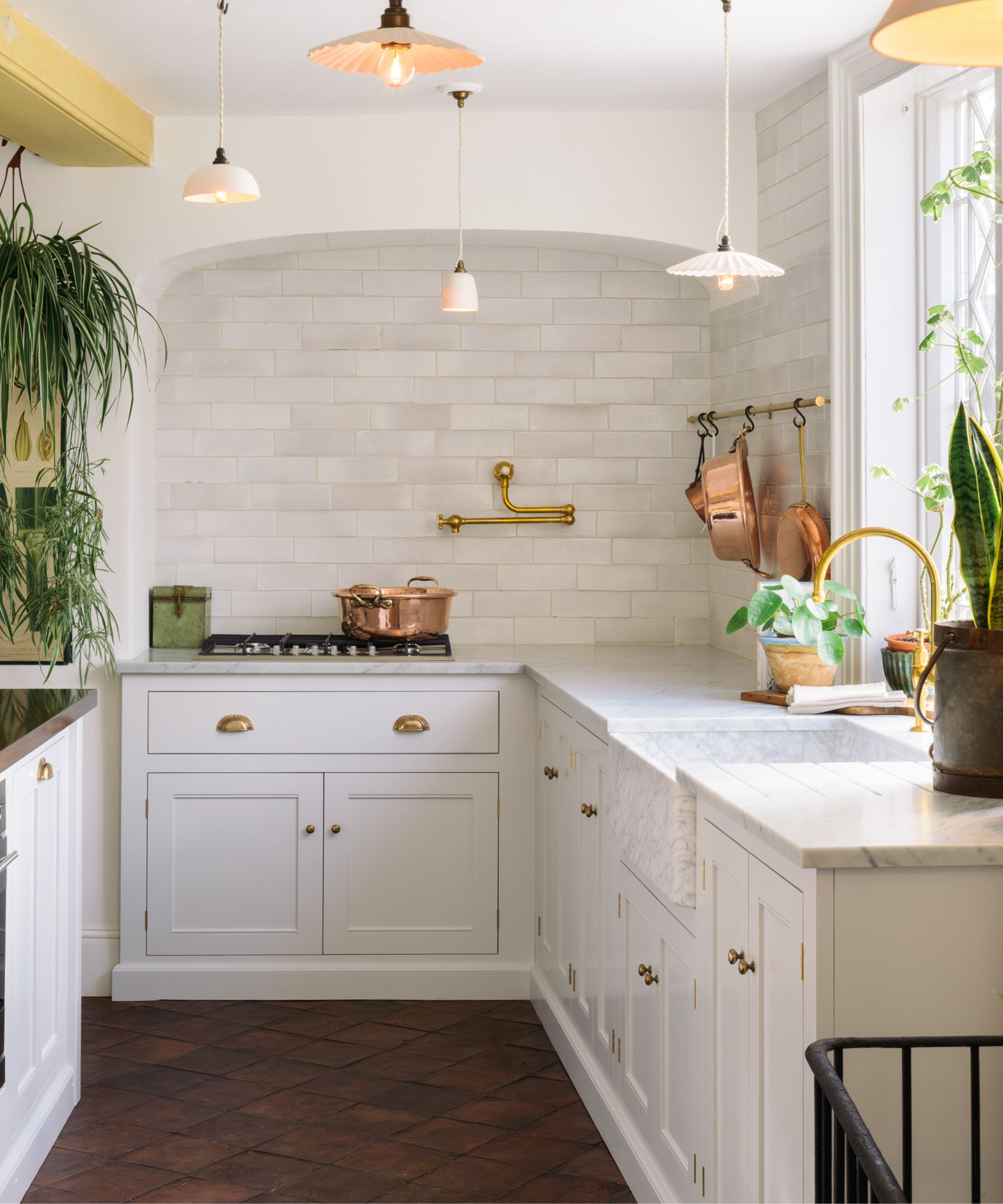
Keeping every component of a kitchen light to make the space feel open and welcoming is preferable for some tastes, while others prefer a deeper contrast between the walls and floors alone. 'The lightness or darkness of the flooring will determine whether to go lighter or darker on the walls,' says Camille DeLew, design specialist at KBF Audi.
'With darker floors, it is preferred to go lighter on the walls since a darker floor tends to ground the space. Having said that, if a lighter floor color is preferred, there is more flexibility to go with either lighter or darker walls (depending on the color of the kitchen cabinets),' she adds.
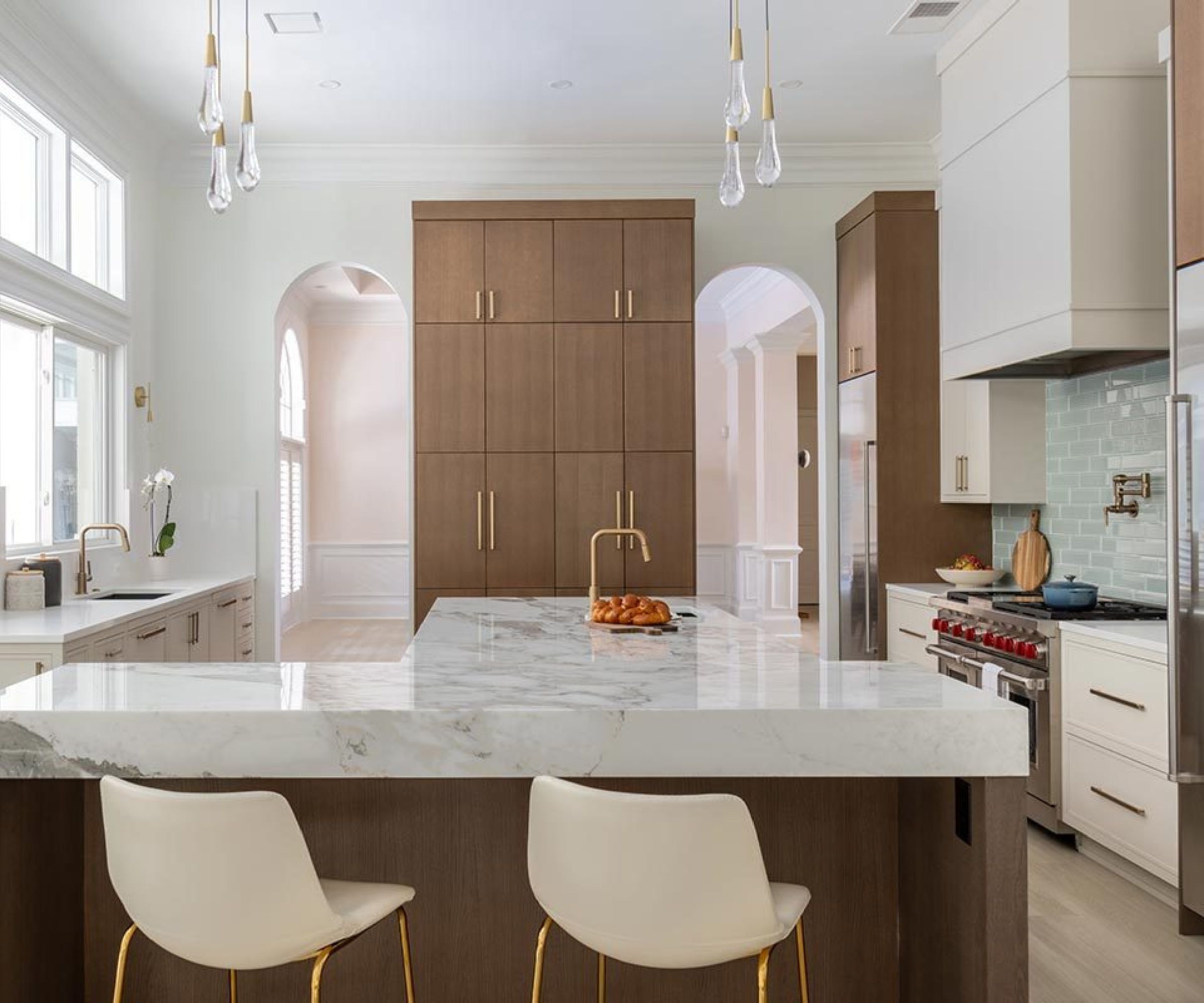
Personal taste and preference are key when making design decisions – there are no steadfast rules to follow, rather ensuring the kitchen flooring and wall color you choose appeals to your style and feels timeless is the priority.
'What is most important is that the material chosen for the floor is complementary to the palette chosen,' says Natalie Rebuck, principal designer at Re: Design Architects. 'We prefer to select kitchen cabinet colors, and then choose the flooring color, and then lastly the paint color. Typically the cabinet color is the more dominant color due to the sheer amount of it within a space,' she adds.
Essentially, kitchen flooring can be lighter or darker than the walls, but how do you choose the right combination? 'I like to have continuity with the walls and floors, allowing cabinets, other millwork, furniture, and architectural details to contrast and highlight the details, so a pairing of darker floors & walls would pair nicely with lighter cabinets,' says Becky.
'Selecting the actual hues needs to involve laying out samples of all materials and color options together in a mood board. In this case, take the floor stain you've selected and lay it on a neutral background with options for paint, cabinet hardware, lighting, and other design elements, including ones in adjacent rooms. It's a bit of a plug n' play until you find that perfect pairing, but this is the best way to ensure you end up with a holistic design,' she adds.
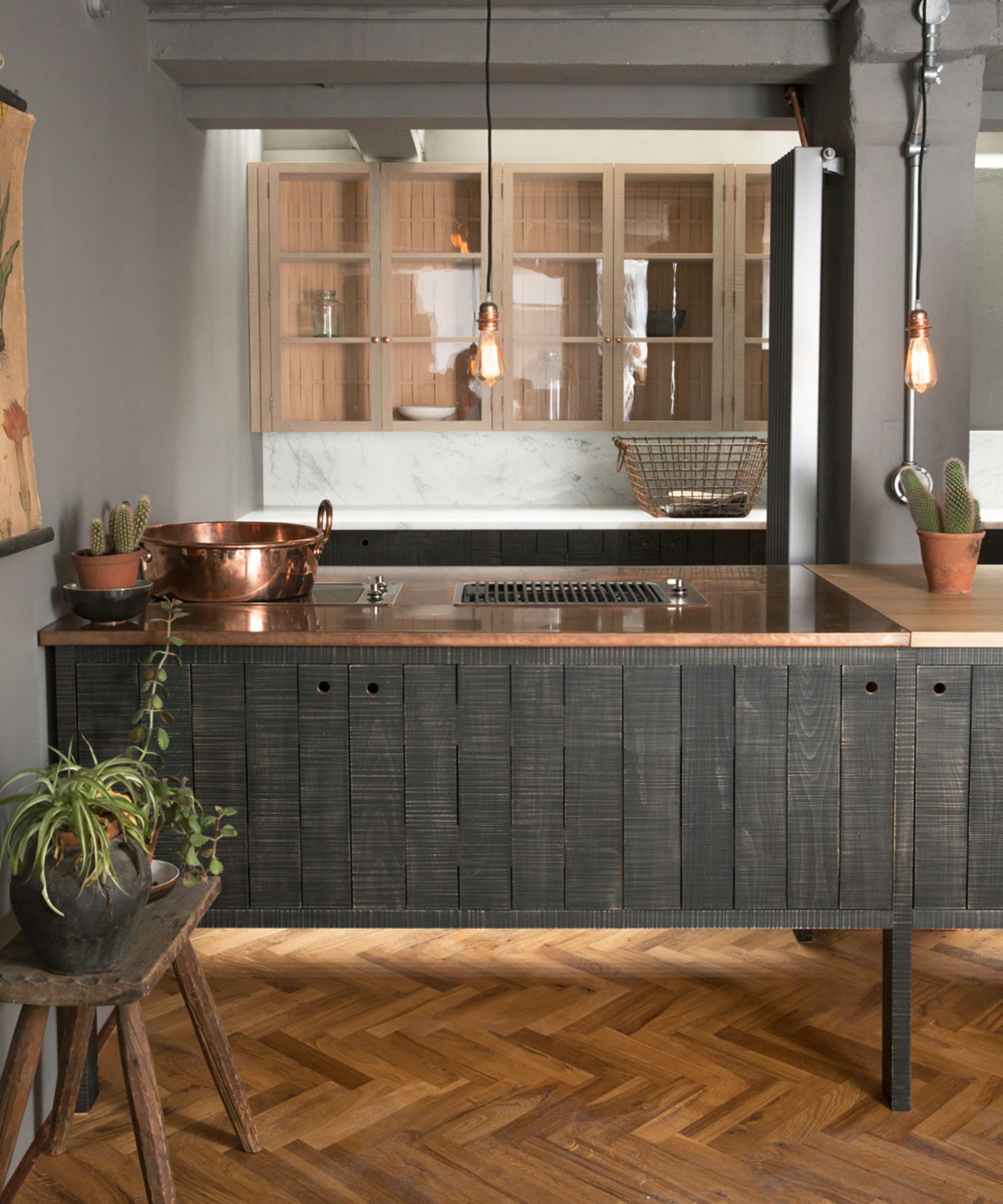
While kitchen flooring and wall color choices generally come down to personal preference, interior designers suggest there are a few styles to steer away from. 'Since kitchens are typically the highest ticket item in one's home, your best bet for longevity in design is to avoid selecting brighter, loud colors,' says Becky.
'While you may love them, save those for subtle transitional accents in the form of art, objects, or towels. You'll thank yourself down the line, especially in resale,' she adds. Similarly, when it comes to colorful or patterned floor designs, Helen Parker, creative director at deVOL, says 'I would tread carefully with patterned and encaustic kitchen tiles in large areas as they can be quite overpowering and easily become a part of the room that you could go off in a few years.'
When it comes to flooring colors, tone, and practicality is key. 'I suggest a medium-dark floor to hide dust, dirt, and food in kitchens, but for the same reason, I don't recommend black flooring. The medium-dark floor, depending on the pattern, helps work as a grounding force in the kitchen,' explains Natalie. If you choose a lighter flooring, make sure it's durable and easy to clean.
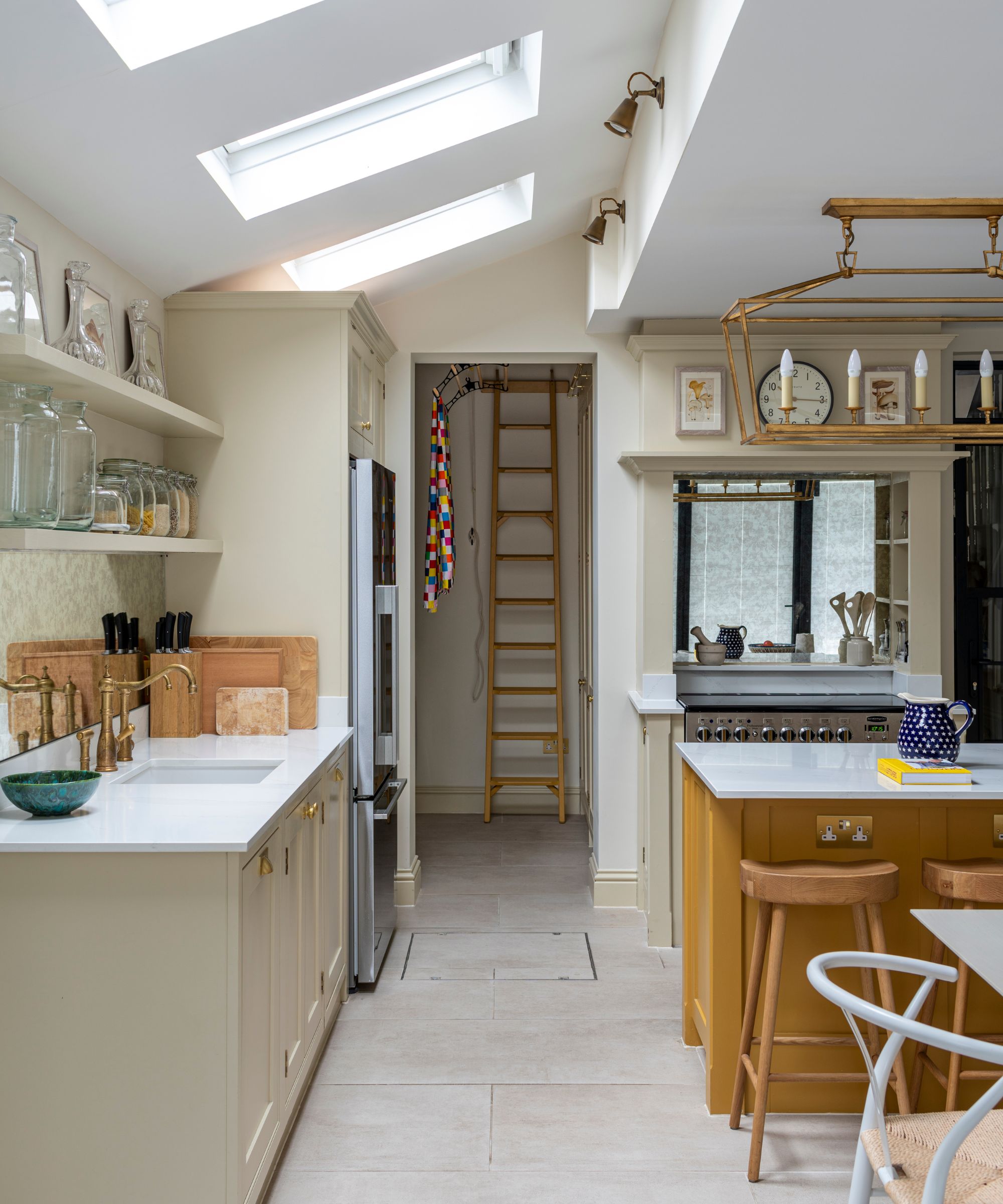
Helen recommends focusing on the material of your flooring when considering how your floor and wall colors will work together. 'I think that kitchen flooring should be a natural product such as stone, marble, or wood. If these materials are chosen then it doesn’t matter if they are lighter or darker than the walls.'
Regardless of the color pairing you choose for your kitchen flooring and walls, Camille suggests, 'In general, you should try to avoid flooring and wall color combinations that don’t have the same undertones. It’s also important to avoid having both the walls and floors match too closely in color. This will eliminate any dimension to the room and make everything look very monotone.'
Kitchen flooring can be lighter or darker than the walls, it's simply a case of pairing the right tones. A kitchen with dark flooring typically looks better with lighter walls to brighten the scheme, while light floors work beautifully with almost any wall color. The most important thing to consider is whether your scheme feels timeless and works with your interior design style – a kitchen is an investment, so make sure you choose a flooring and wall color combination that you love, rather than something considered on-trend.







